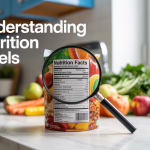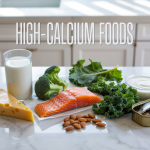Food and drug interactions affect millions of people taking medications daily, yet many patients remain unaware of potentially dangerous combinations hiding in their medicine cabinets and kitchens. Managing food and drug interactions for safe medication use requires understanding how everyday foods, supplements, and other medications can alter your prescriptions’ effectiveness or cause serious side effects.
This guide is for patients taking prescription medications, caregivers managing multiple medications for family members, and anyone who wants to avoid dangerous interactions that could land them in the emergency room. You’ll learn practical strategies to keep yourself safe while getting the most benefit from your treatments.
We’ll walk through how common foods like grapefruit and leafy greens can interfere with your medications, why that innocent vitamin supplement might be working against your prescriptions, and which drug combinations create the biggest safety risks. You’ll also discover simple systems for tracking your medications and communicating effectively with your healthcare team to prevent problems before they start.
Understanding Food-Drug Interactions That Impact Medication Effectiveness
How Grapefruit Affects Cholesterol and Blood Pressure Medications
Grapefruit presents significant risks when consumed alongside certain cholesterol and blood pressure medications. This citrus fruit can alter the way specific cholesterol medications work in your body, creating potentially dangerous complications. When combined with statin-based cholesterol medications such as Lipitor, Mevacor, and Zocor, grapefruit creates a particularly hazardous mix that can cause dangerously elevated levels of medicine in your bloodstream, significantly increasing the likelihood and severity of side effects.
The interaction extends beyond cholesterol management to cardiovascular health. Grapefruit and grapefruit juice can interfere with various blood pressure-lowering medications, making adverse side effects more probable and potentially compromising your treatment effectiveness.
Why Leafy Greens Can Counteract Blood Thinners
Leafy green vegetables, while nutritionally beneficial, pose specific challenges for patients taking blood-thinning medications. Vegetables such as spinach and kale contain exceptionally high levels of vitamin K, which directly counteracts the effectiveness of blood thinners like warfarin, commonly known by the brand name Coumadin.
This interaction is particularly concerning because warfarin is prescribed to prevent dangerous blood clots. When vitamin K levels fluctuate significantly due to varying consumption of leafy greens, it can render your blood thinner less effective, potentially putting you at risk for clot formation while simultaneously making dosage management more complex for healthcare providers.
How Salt Retention Reduces Medication Dosage Adequacy
Salt consumption creates a widespread challenge in medication management due to its prevalence throughout the food supply. When you consume excessive amounts of salt, it triggers increased fluid retention within your body. This physiological response can potentially render your current medication doses inadequate for achieving desired therapeutic effects.
The mechanism behind this interaction involves your body’s natural response to sodium intake, which affects blood volume and pressure. As fluid retention increases, medications may become diluted or their intended effects diminished, requiring healthcare providers to adjust dosages to maintain therapeutic effectiveness.
Why Alcohol Creates Dangerous Side Effects with Multiple Medications
Alcohol consumption while taking medications creates multiple layers of risk that extend far beyond simple drug interactions. Alcohol itself can cause various symptoms including headaches, nausea, drowsiness, and loss of coordination. When combined with certain medications, these effects become magnified and can lead to serious complications including internal bleeding and significant issues affecting your liver, heart, and lungs.
The complexity of alcohol-medication interactions stems from alcohol’s ability to both increase and decrease a medication’s effectiveness. This unpredictable nature makes it particularly dangerous, as it can either intensify medication effects to toxic levels or reduce therapeutic benefits when you need them most.
Managing Supplement Interactions to Prevent Medication Complications
How St. John’s Wort Weakens Heart Medications and Blood Thinners
St. John’s Wort represents one of the most problematic herbal supplements when it comes to medication interactions. This popular herbal remedy may weaken the effects of numerous critical medications, creating potentially dangerous situations for patients who rely on consistent drug effectiveness. The interaction is particularly concerning with heart medications, where reduced efficacy can lead to cardiovascular complications.
HIV drugs also face significant interference from St. John’s Wort, potentially compromising life-saving treatment regimens. The herb’s impact extends to warfarin, a crucial blood-thinning medication used to prevent dangerous blood clots. When St. John’s Wort reduces warfarin’s effectiveness, patients face increased risks of stroke, heart attack, and other clot-related complications. Additionally, certain statin medications, which are essential for cholesterol management and heart disease prevention, may also experience reduced potency when combined with this supplement.
Why Vitamin E Increases Bleeding Risk with Anticoagulants
Now that we’ve covered St. John’s Wort interactions, let’s examine how Vitamin E creates different but equally serious complications. Taking Vitamin E alongside blood-thinning medications like warfarin (Coumadin) presents a particularly dangerous scenario. Unlike St. John’s Wort, which typically reduces medication effectiveness, Vitamin E actually amplifies the blood-thinning effects.
This combination increases anti-clotting activity beyond safe therapeutic levels, significantly heightening the risk of bleeding complications. Patients may experience excessive bruising, prolonged bleeding from minor cuts, or more severe internal bleeding episodes. The enhanced anticoagulant effect can make even routine activities potentially hazardous, as normal bumps or minor injuries could result in disproportionate bleeding responses.
How Ginseng May Interfere with Blood Pressure and Statin Medications
With this understanding of supplement amplification effects in mind, ginseng presents a more complex interaction profile. The relationship between ginseng and various medications remains unclear, highlighting the unpredictable nature of supplement interactions. Ginseng’s interaction with calcium channel blockers and other high blood pressure medications creates uncertainty in treatment outcomes, making it difficult for healthcare providers to predict patient responses.
The herb also shows potential interference with statin medications, which could affect cholesterol management strategies. Some antidepressants may also experience altered effectiveness when combined with ginseng. Studies examining ginseng’s interaction with warfarin have yielded mixed results, demonstrating the complexity of supplement-drug relationships. This uncertainty makes ginseng particularly challenging for patients taking multiple medications, as the unpredictable interactions could compromise treatment effectiveness across various therapeutic areas.
Understanding the Three-Quarters of Adults at Risk from Supplement Interactions
Previously, we’ve examined specific supplement risks, but the scope of this issue extends far beyond individual cases. About three-quarters of U.S. adults use dietary supplements, creating a massive population potentially vulnerable to medication interactions. This statistic reveals the widespread nature of the problem, as millions of Americans may unknowingly compromise their medication effectiveness or increase their risk of adverse effects.
The high usage rate means that healthcare providers must routinely assess supplement use during patient consultations, yet many patients fail to disclose their supplement regimens, viewing them as separate from their medical treatment. This disconnect between supplement use and medical care creates a significant safety gap, where potentially dangerous interactions may go undetected until adverse effects occur.
Recognizing Dangerous Drug-to-Drug Interactions
How Sedatives and Antihistamines Impair Motor Functions
When sedatives prescribed for sleep disorders are combined with antihistamines used for allergy relief, the resulting interaction creates significant safety concerns that extend far beyond simple drowsiness. This dangerous combination works synergistically to slow down neural responses and impair cognitive processing, creating a compounding effect that dramatically reduces reaction times and motor coordination.
The enhanced sedation from this drug combination makes activities requiring quick reflexes and clear judgment extremely hazardous. Driving becomes particularly dangerous as the combined depressant effects can mimic alcohol intoxication, leading to delayed brake responses, poor lane control, and impaired decision-making abilities. Operating machinery of any kind poses similar risks, as the slowed reactions can result in serious workplace accidents and injuries.
Why Bronchodilators Require Caution with Heart and Blood Pressure Conditions
Bronchodilators serve as essential medications for managing respiratory conditions by relieving shortness of breath and chest tightness associated with asthma. However, these medications carry significant cardiovascular implications that require careful medical supervision for patients with pre-existing conditions.
Individuals diagnosed with heart disease face particular risks when using bronchodilators, as these medications can affect heart rhythm and increase cardiac workload. Similarly, patients with high blood pressure may experience further elevation in blood pressure readings, potentially reaching dangerous levels that could trigger cardiovascular events.
The interaction becomes even more complex for patients managing thyroid disease or diabetes. Healthcare professional consultation becomes absolutely critical before initiating bronchodilator therapy in these populations, as the medications can interfere with existing treatment regimens and exacerbate underlying metabolic imbalances.
How Cordarone Creates Muscle Injury Risk with High-Dose Statins
The combination of Cordarone (amiodarone) with high-dose Zocor (simvastatin) represents one of the most serious drug-to-drug interactions in cardiovascular medicine. When simvastatin is prescribed in doses exceeding 20 mg alongside Cordarone treatment, patients face the life-threatening risk of developing rhabdomyolysis, a rare but devastating muscle injury condition.
Rhabdomyolysis occurs when muscle fibers break down rapidly, releasing proteins and enzymes into the bloodstream that can overwhelm the kidneys’ filtering capacity. This cascade of events can progress to complete kidney failure, requiring emergency dialysis or potentially resulting in death if not promptly recognized and treated.
Cordarone’s interaction profile extends beyond statin medications to affect anticoagulation therapy as well. The medication significantly reduces the effectiveness of Coumadin (warfarin), a critical blood thinner used to prevent stroke and blood clots, requiring careful monitoring and potential dose adjustments to maintain therapeutic anticoagulation levels.
Why Nasal Decongestants Can Raise Blood Pressure and Reduce Drug Effectiveness
While nasal decongestants provide effective relief from congestion symptoms, their systemic effects create potential complications for patients with cardiovascular and metabolic conditions. These medications work by constricting blood vessels in nasal passages, but this vasoconstriction effect extends throughout the body, leading to increased blood pressure that can be particularly problematic for hypertensive patients.
The blood pressure elevation from nasal decongestants can interfere with the effectiveness of antihypertensive medications, essentially working against prescribed treatments and potentially negating their protective cardiovascular benefits. This interaction creates a particularly concerning situation where symptom relief from congestion may come at the cost of cardiovascular stability.
Patients with heart disease, high blood pressure, thyroid disease, or diabetes must exercise extreme caution with these over-the-counter medications. Healthcare professional consultation becomes essential before using nasal decongestants, as the interaction potential varies significantly based on individual medical histories and current medication regimens.
Balancing Nutrition and Medication Safety for Optimal Health
How to Maintain Consistent Vitamin K Intake with Blood Thinners
Maintaining a careful balance of vitamin K intake is crucial when using anticoagulants such as warfarin (Coumadin). This delicate equilibrium requires consistent dietary patterns rather than complete elimination of vitamin K-rich foods. The key lies in establishing a steady, predictable intake that allows your healthcare provider to calibrate your medication dosage appropriately.
Focus on consuming similar amounts of vitamin K daily rather than dramatically fluctuating your intake. This means incorporating leafy greens, broccoli, and other vitamin K sources into your regular meal planning while maintaining portion consistency. Document your dietary patterns to help healthcare professionals monitor how your food choices affect your medication’s effectiveness.
When to Choose Alternative Medications to Continue Eating Beneficial Foods
Patients who wish to continue eating beneficial foods like grapefruit, which interacts dangerously with statin-based cholesterol medications, may be treated with alternative medications. This approach allows you to maintain nutritionally valuable foods in your diet while ensuring medication safety and effectiveness.
Working with your healthcare provider to identify medication alternatives can preserve your access to foods that provide significant health benefits. Rather than eliminating nutrient-dense options from your diet, exploring different medication classes or formulations often presents a viable solution that supports both therapeutic goals and nutritional well-being.
Why Regular Communication with Healthcare Teams Prevents Dangerous Interactions
Regular communication with your healthcare team is key to awareness of risks and prevention of dangerous interactions. Inform your healthcare professional about all diet formulations, medications, and supplements, and discuss food interactions to determine if a food should be restricted.
This ongoing dialogue ensures that any changes in your diet, supplement regimen, or medication schedule are evaluated for potential interactions before they become problematic. Your healthcare team can provide personalized guidance based on your complete health profile, including all substances you consume and their potential interactions with your prescribed medications.
How to Adjust Diet Patterns Without Compromising Medication Effectiveness
Maintaining a healthy eating pattern and consuming appropriate amounts for your activity level is important for overall health. Strategic dietary adjustments can accommodate medication requirements while preserving nutritional quality and supporting your overall wellness goals.
Consider timing modifications, portion adjustments, or food substitutions that maintain nutritional value while respecting medication protocols. This balanced approach ensures that your dietary choices support both your medication’s therapeutic effects and your body’s nutritional needs, creating a sustainable long-term health strategy.
Implementing Safe Medication Practices to Prevent Interactions
How to Research and Document All Medications and Supplements
Reading labels carefully and maintaining comprehensive documentation forms the foundation of safe medication management. Always examine prescription drugs, over-the-counter medications, and dietary supplements (including herbs) to understand their warnings and potential interactions. Create a detailed record that includes medication names, dosages, frequency, prescribing physicians, and any special instructions. This documentation should encompass all substances you consume, regardless of how minor they may seem, as even herbal supplements can significantly impact medication effectiveness.
Why Using One Pharmacy Improves Interaction Detection
Previously, I’ve discussed various types of interactions, and now we’ll examine how consolidating your pharmacy services enhances safety. Using one pharmacy for all your medication needs dramatically improves interaction detection capabilities. Pharmacists maintain comprehensive profiles of your complete medication regimen, enabling their sophisticated computer systems to flag potential interactions automatically. This centralized approach allows pharmacists to cross-reference all your medications, supplements, and over-the-counter products against each other, providing an additional safety net that multiple pharmacies cannot offer.
What Questions to Ask Healthcare Providers About New Medications
Now that we have covered documentation strategies, effective communication with healthcare professionals becomes crucial. When prescribed a new medication, ask your healthcare professional what to avoid regarding food, beverages, dietary supplements, and other drugs. Before taking any drug, inquire whether it can be taken with other medications, if certain foods or products should be avoided, about possible drug interaction signs, and how the drug works. Additionally, request information about additional resources or materials that might be available to help you understand the medication better.
How to Maintain Accurate Medication Lists for Medical Appointments
With this comprehensive approach in mind, maintaining current medication records ensures continuity of care across all healthcare settings. Keep all healthcare professionals informed about everything you take by maintaining an accurate, current medication list to bring to all medical appointments. This list should be updated immediately when medications are added, discontinued, or dosages change, ensuring every healthcare provider has complete information to make informed decisions about your care.
Managing medication interactions requires vigilance, communication, and proactive planning. By understanding how foods, supplements, and other drugs can affect your medications, you can work with your healthcare team to prevent dangerous complications while maintaining optimal health. Whether it’s avoiding grapefruit with certain cholesterol medications or monitoring vitamin K intake with blood thinners, these precautions are essential for medication safety.
The key to successful interaction management lies in open communication with your healthcare professionals and pharmacists. Keep detailed records of all medications, supplements, and dietary habits you maintain. Ask questions about potential interactions whenever starting new treatments, and use one pharmacy for all your medication needs to ensure comprehensive monitoring. Taking these steps will help you achieve the full therapeutic benefits of your medications while minimizing risks to your health.














